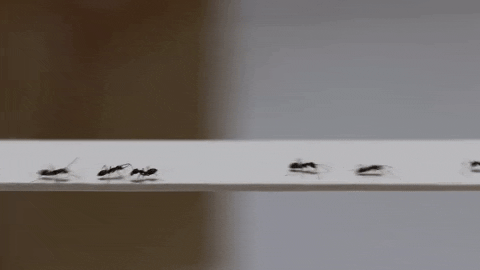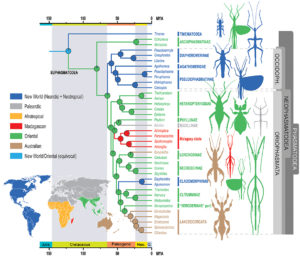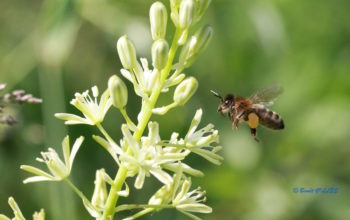Insects have flying capabilities far beyond what robotics engineers can produce. However, the control of manoeuvres and posture during the flight remains to this day incomplete.
In flies (Diptera), specialized organs haltères (modified hindwings), provide information on the position of the body (rotation) in space by playing a role of gyroscope (coriolis force) (read articles on insect flight : anatomie et aérodynamique).
Twisting forces on dumbbells are detected by mechanoreceptors sensils campaniformes (for more information this article).
Ne possédant pas d’barbellères, les autres familles d’insectes utilisent d’autres structures pour prendre en compte de paramètre : c’est ce qu’a souhaité découvrir l’équipe mené par A.L. Eberle from the University of Washington (USA).
For that, the scientists reproduced an artificial plastic wing of butterfly Manduca sexta, which they fixed to an axis and made beat at a frequency of 25Hz.
caption id=”attachment_1877″ align=”alignright” width=”316″] Artificial wing diagram and the different rotation axes (Source : Eberle et al. – Journal of the Royal Society (2015))[/caption]
Artificial wing diagram and the different rotation axes (Source : Eberle et al. – Journal of the Royal Society (2015))[/caption]
With the help of computer models and robotics, they observed and compared the three-dimensional structural dynamics: the deformations and torsional forces, undergone by the wing for different orientations of its axis ( see diagram opposite).
The team highlighted the existence of torsion and bending forces at the base of the wing during modifications of its axis. The many bell-shaped senses at the base of the wing provide gyroscopic information to the insect, as do the dumbbells of flies. These mechanoreceptors detect structural changes in the wing during flight (pressure on the surface of the cuticle), inform the insect about its position in space and allow it to control its stability.
The discovery of this new function of insect wings allows us to learn more about the mechanisms involved in flight. However, the relationship between wing flexibility and the control system is not yet well established.
This study, supported by the Air Force Office, aims to transfer this knowledge to the development of miniature flying robots based on insect flight (biomimicry).
Source :
– Eberle A.L. Dickerson B.H. Reinhall P.G. & Daniel T.L. (2015) : A new twist on gyroscopic sensing : body rotations lead to torsion in flapping, flexing insect wings. Journal of the Royal Society Interface. 12:104 (link here)





